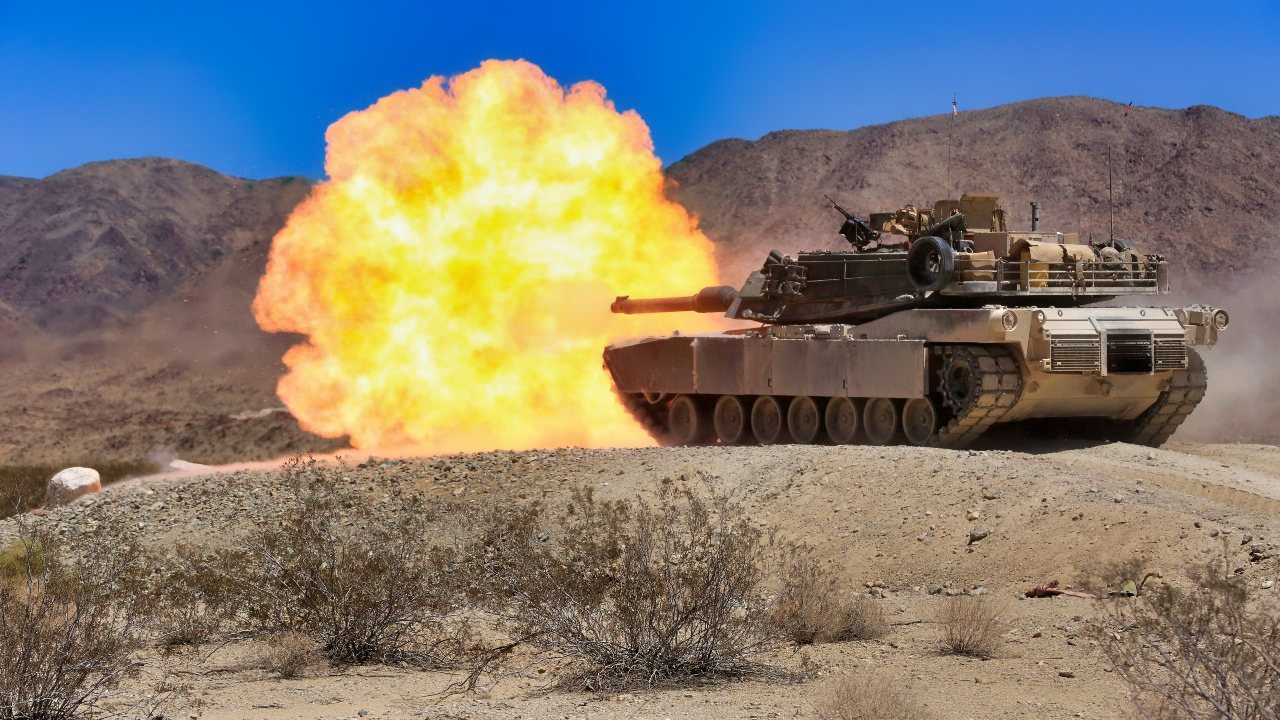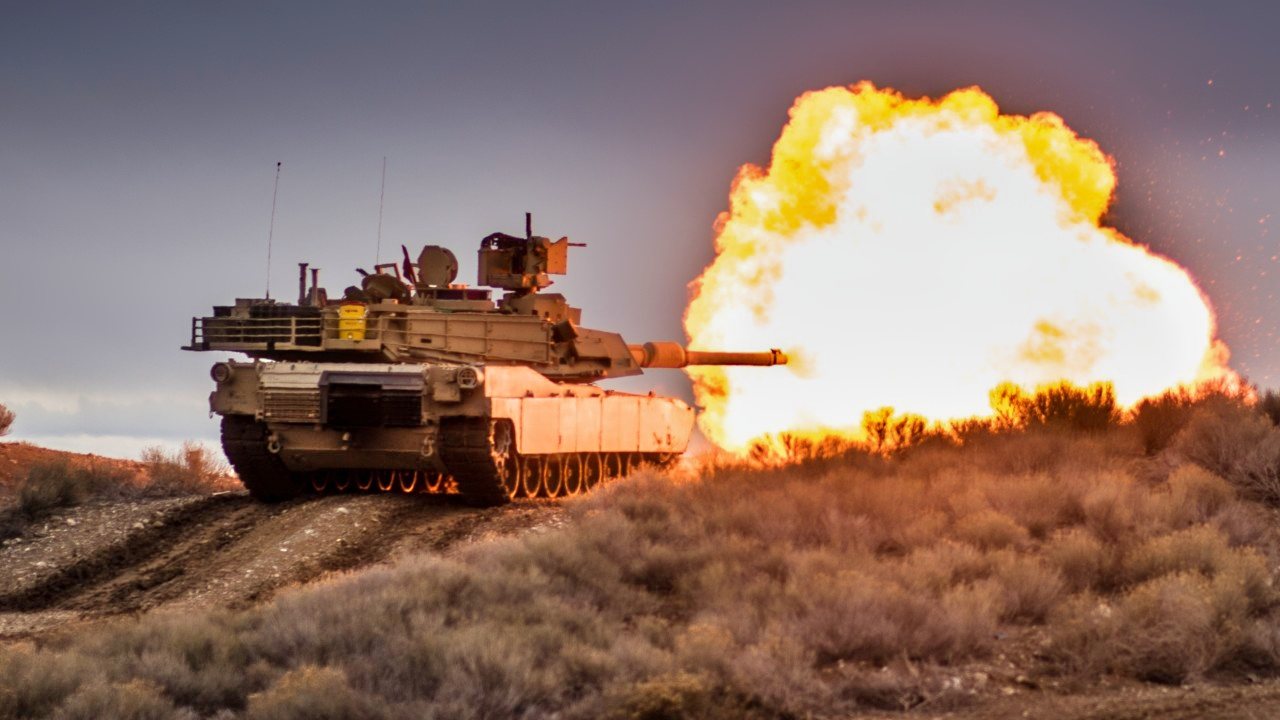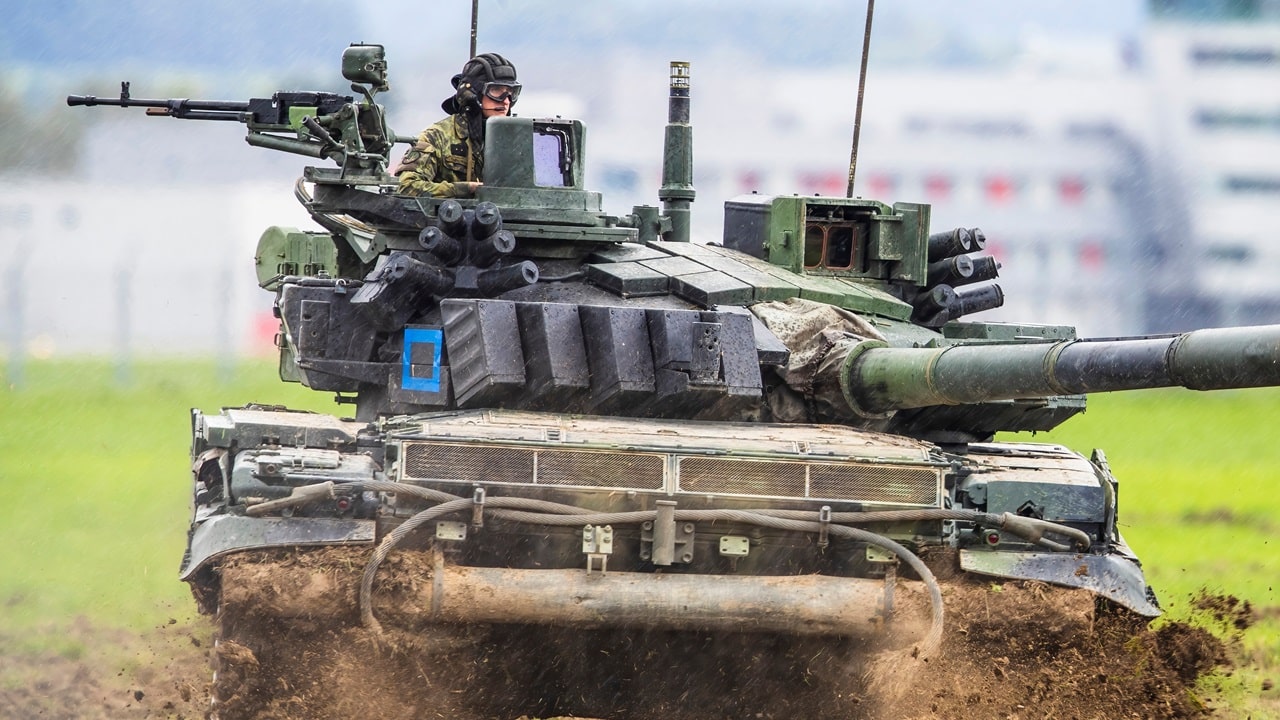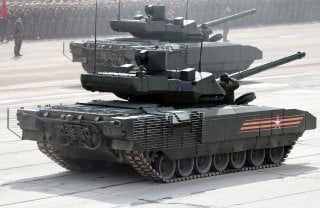The War in Ukraine Proves Tanks Are Here To Stay (And Fight)
The main battle tank (MBT) remains vital in modern warfare despite challenges from advanced anti-tank weapons and drones. The conflict between Russia and Ukraine has reaffirmed the MBT's importance, showcasing its role in both offensive and defensive operations.
Summary: The main battle tank (MBT) remains vital in modern warfare despite challenges from advanced anti-tank weapons and drones. The conflict between Russia and Ukraine has reaffirmed the MBT's importance, showcasing its role in both offensive and defensive operations.

-As a result, European nations, particularly those near Russia, are investing heavily in tank acquisition to bolster their defenses.
-Innovations in tank technology, such as active protection systems and modern design upgrades like those in the U.S. M1 Abrams, continue to enhance the MBT's effectiveness on the battlefield, underscoring the ongoing relevance and necessity of tanks in contemporary military strategies.
Does the Tank Have a Future? Yes.
The main battle tank (MBT) is as important to modern warfare today as ever. The proliferation of suicide drones and advanced antitank-guided missiles (ATGMs) has caused some observers to predict the demise of the MBT. They point to the losses in MBTs sustained by both Ukraine and Russia as evidence that the tank’s day has passed. The reality is precisely the opposite.
The modern battlefield is becoming increasingly complex and lethal. The inherent capabilities of armored platforms – survivability, mobility, firepower, and sensing – are more important today than they were in previous eras. That is why European nations, particularly those closest to Russia, are on a tank-buying spree. They need to acquire thousands of tanks and other armored fighting vehicles from a variety of sources.
Until recently, it was a commonly held view among Western defense experts that the age of large-scale armored warfare ended with the collapse of the Soviet Union and that the MBT, the central fighting platform of that period, was increasingly irrelevant. Without the looming presence of the Soviet Army and its massive inventory of tanks in Central and Eastern Europe, there seemed little need to prepare for major tank battles in the future.
In addition, the growing inventory of ground and air-launched anti-tank weapons seemed to make the tank an expensive anachronism. As a result, many militaries reduced their inventories of MBTs, or even, as in the case of the Netherlands, eliminated them entirely.

Most of the world followed in halting existing tank modernization programs. One of the few exceptions was the United States, which maintained a program to upgrade its exceptional MBT, the M1 Abrams. Another was Israel, with its Merkava. Israel also pioneered the development of active protection systems (APS) to defend armored vehicles against ATGMs, rocket-propelled grenades, and even cannon-launched projectiles.
On February 22, 2022, the conventional wisdom that the tank was obsolete was overturned when Russia invaded Ukraine, launching the most massive, armored offensive in Europe since the end of World War II. Tanks played a central role in both Russia’s initial and subsequent offensives. Similarly, tanks have been at the heart of Ukraine’s defenses and counteroffensives.
Without question, both Ukraine and Russia have suffered tremendous losses in MBTs and other armored fighting vehicles, artillery, and personnel. Russia is estimated to have lost as many as 3,000 tanks, its entire pre-war inventory. Its overall equipment losses have been far higher, reflecting the overall lethality of the modern battlefield. Ukraine’s losses in MBTs have been fewer in absolute numbers but extremely significant in relative terms. In its counteroffensive last fall, Ukraine also reportedly lost a number of modern MBTs provided by the United States and other NATO countries.
Most of these losses, particularly in the early stages of the Russia-Ukraine war, have been attributed to poor combined arms tactics. Russian commanders sent out massed tank columns without proper reconnaissance, adequate infantry support, or preparatory artillery fire. Naturally, these units were slaughtered. In more recent battles, both sides have struggled to break through deep defensive lines. Both Germany and the Allied Powers experienced similar problems in breaching prepared defenses during World War II. But when properly employed in combination with other combat arms, particularly mobile infantry, artillery, and air defenses, tanks remain one of the most effective weapons on the modern battlefield.

Israel has demonstrated the proper use of MBTs in the heavily urbanized terrain of Gaza. There, tanks have been employed properly, in close coordination with other combat arms. While suffering some losses, Israel’s MBT fleet has proven resilient, saving the lives of not only their crews but of the soldiers accompanying them in combat.
A driving lesson of the Russia-Ukraine war is the importance of tanks. Russia is both taking thousands of older tanks out of storage and increasing production of modern MBTs. Ukraine has been pleading for the West to provide more advanced tanks such as the Abrams. NATO, particularly its Eastern European members, also now sees the need for more and better tanks.
Poland recognized the need to upgrade and expand its fleet of MBTs well before the Russian invasion of Ukraine, initiating a program to replace its obsolescent Soviet-era tanks with modern, Western-designed platforms. As part of this effort, Warsaw recently contracted to acquire nearly 400 US M1 Abrams. It has also created a tank maintenance center that can support its own Abrams tanks along with those operated by US Army Armored Brigade Combat Teams continuously deployed there, as well as those being acquired by other Eastern European countries such as Romania and Ukraine.
In addition, Poland has decided to buy almost 1,000 K-2 Black Panther tanks from South Korea. This is in some ways unfortunate, since the K-2, unlike the Abrams, has not been proven in combat and will require a separate logistics and sustainment system to support it. The move will also complicate interoperability with US armored forces operating in Poland and the region.
However long the Russia-Ukraine war continues and regardless of the outcome, Kyiv will need more and better MBTs. The US needs to send additional Abrams in the near term while developing a long-term strategy to support Ukraine’s future MBT modernization plans. These plans should be coordinated with Poland, which has played and will continue to play a central role in a regional strategy for Abrams sales.

By acquiring the current generation of Abrams MBTs, Poland and other Eastern European countries can also take advantage of current efforts by the US Army and General Dynamics to revolutionize the platform. The proposed Abrams variant, the M1E3, is virtually a whole new tank. It will have an automatic main gun loader, allowing the new tank to be designed with a smaller and lighter turret and to operate with one fewer crew member. Even more important will be the M1E3’s “space-age” features such as a possible hybrid diesel electric drive, integrated defenses against drones and ATGMs, advanced sensors, enhanced command, control and communications systems, and signature reduction measures. By acquiring the current Abrams variant, allies and partners will be in a position to take advantage of the transformational innovations coming in American armor.
About the Author: Dr. Daniel Goure
Dr. Dan Goure is a non-resident fellow with the Lexington Institute, a nonprofit public-policy research organization in Arlington, Virginia. He has held senior positions in both the private sector and the U.S. government, including as a member of the 2001 Department of Defense transition team. Follow him on Twitter at @dgoure and the Lexington Institute @LexNextDC.
This article was first published by RealClearDefense.


